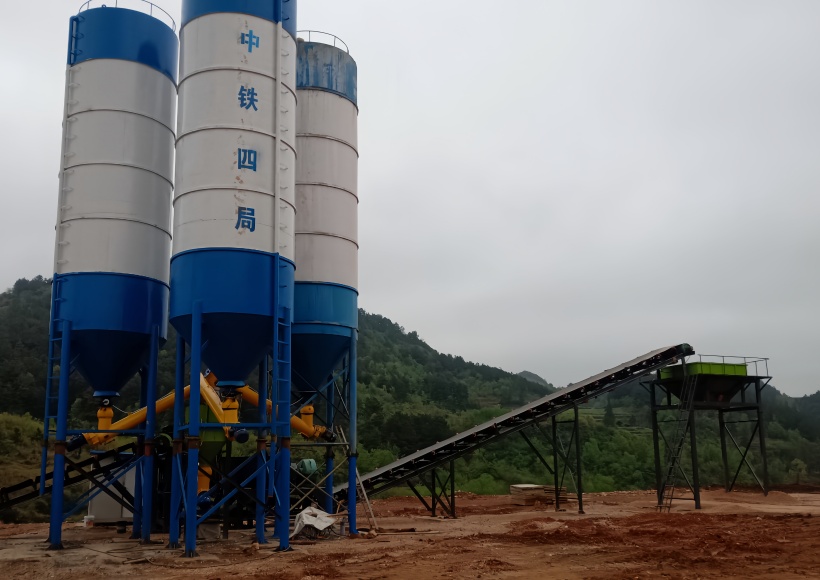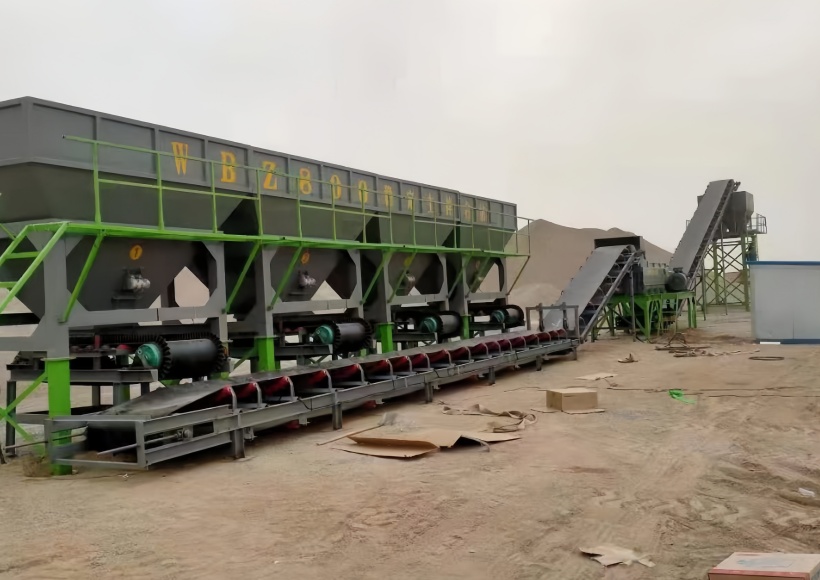In large-scale infrastructure projects such as highways, railways, and water conservancy projects, stabilized soil mixing plants are core equipment for producing base mixes. Their performance and cost directly impact project profitability. With a stable output of 800 tons per hour, the WBZ800 model is the preferred equipment for many medium- to large-scale construction projects. For interested companies or investors, the most pressing question is, "How much does a WBZ800 plant cost?" In reality, price isn't a fixed number; it's a complex combination of factors, including configuration, technical content, and brand support. This article will comprehensively explain the WBZ800's pricing structure and market trends, and provide practical purchasing strategies to help you make a cost-effective investment decision.

Key Factors Affecting the WBZ800 Price
The price of the WBZ800 varies greatly, ranging from hundreds of thousands to over one million yuan. The main factors affecting the quality of a mixing plant are:
1. Core Configuration and Automation Level (the most influential):
- Control System: The price difference between basic electrical control and fully automatic intelligent control systems (integrated with an industrial computer, professional control software, and a high-precision sensor system) can reach hundreds of thousands of yuan. Advanced automation systems can significantly improve batching accuracy, production efficiency, and reduce labor costs.
- Mixing Unit: Twin-shaft forced mixers are currently commonly used, but factors such as the wear-resistant material of the impellers, motor brand, and power configuration vary, directly affecting the equipment's lifespan and price.
- Metering System: The metering accuracy of powders and liquids is crucial to mixing quality. Systems that utilize high-precision sensors and pneumatic/electric valves require a higher initial investment but can significantly reduce material waste.
II. Equipment Materials and Manufacturing Process:
- The specifications and thickness of the steel used in major structural components such as the frame, storage silos, and conveyor trusses affect the durability, wind and earthquake resistance, and are a significant component of the overall cost.
- Welding quality and surface anti-corrosion treatment (such as shot blasting and multi-layer spray coating) directly impact the equipment's lifespan and maintenance frequency.
III. Options and Functional Expansion:
- Number of Powder Silos: The standard configuration generally includes one to two powder silos, with each additional silo requiring additional investment.
- Loading Method: The basic model utilizes a belt conveyor. Optional features such as "side platform loading" or "loader-mounted" will affect the total price.
- Environmental Protection Devices: High-efficiency, environmentally friendly solutions such as pulse dust collectors are significantly more expensive than standard bag filters or wet dust collectors, but they better comply with strict environmental regulations.
- Finished Product Buffer Silos: Adding a finished product buffer silo can reduce waiting time for transport vehicles and improve overall production efficiency, making it a value-added feature.

IV. Brand Premium and Service System:
- First-tier brands typically command higher prices than smaller manufacturers due to their mature technology, reliable stability, and comprehensive after-sales support (such as installation guidance, commissioning training, and spare parts availability).
- It is recommended to factor maintenance costs, downtime risks, and after-sales response efficiency throughout the equipment's lifecycle into your overall cost assessment.
WBZ800 Stabilized Soil Mixing Plant Market Price Range
The following is an approximate price range for different configuration levels in the current market (for reference only; actual prices are subject to manufacturer's contract quote):
Configuration level | Price range ($) | Main Features |
Economic Configuration | $64286-$68571 | Semi-automatic control, basic metering function, standard materials, simple dust removal, 1 powder tank |
Standard configuration | $71429-$78571 | Fully automatic control, high metering accuracy, wear-resistant material, pulse dust removal, optional 2-3 powder tanks |
High-end configuration | $75714-$82857 | Intelligent control system, imported core components, super wear-resistant design, multiple dust removal |
Procurement Recommendations: Rational Evaluation, Accurate Investment
1. Prioritize Needs: Clarify project scale, schedule, environmental policies, and budget, and optimally match equipment configuration to avoid redundancy or under-specifications.
2. Detailed Configuration: Request detailed, itemized quotes from suppliers, focusing on the brand, model, and specifications of core components to ensure consistency in comparison.
3. Field investigation: If conditions permit, conduct on-site inspections of manufacturers or operating projects to gain an intuitive understanding of equipment technology, operational stability, user reputation, etc.
4. Focus on Long-Term Value: Integrate after-sales service capabilities, spare parts availability, and technical support into your decision-making process. Reliable equipment with timely service is more cost-effective in the long run.
Summary
Investing in a WBZ800 soil stabilizer mixing plant requires a comprehensive balance between performance, price, and service. Its mainstream market price ranges from 650,000 to 900,000 yuan, depending on the configuration. We recommend comparing and analyzing options to select a reputable supplier with solid technical support, allowing you to tailor the equipment solution that best meets your project needs. Prudent early decision-making is crucial for ensuring efficient and profitable project execution.